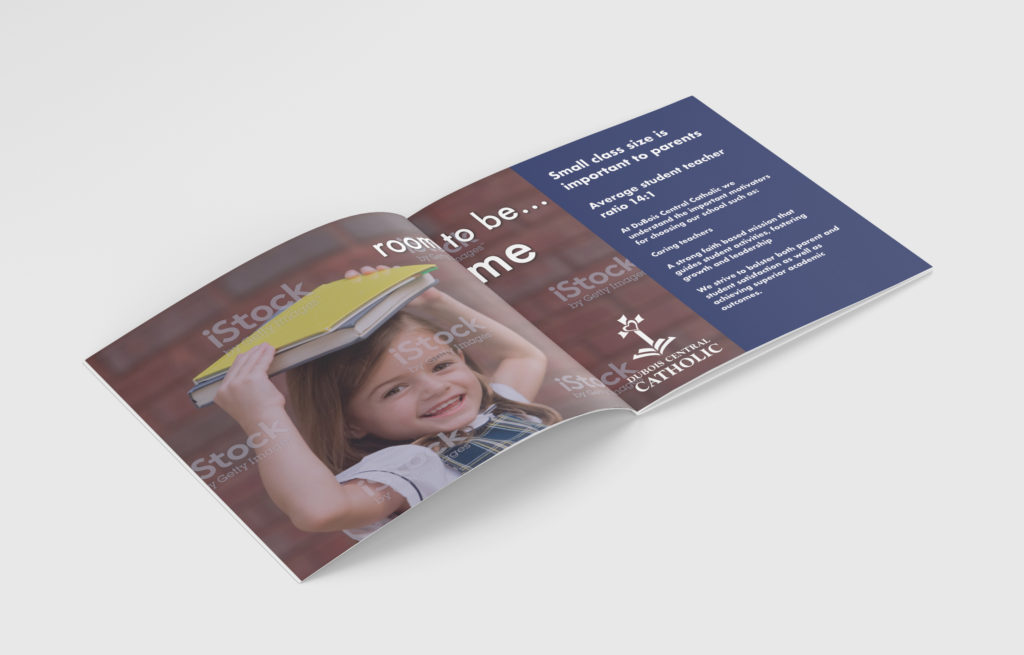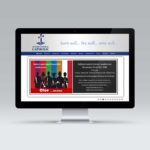Actionable Research
In an age of computerized data gathered at awesome speed there is no problem with the quantity of information available to us. The problem is the opposite or analysis paralysis, not acting on what the data tells us.
Before authorizing research decide on actions to be taken based on possible results. If the answer is none or for curiosity sake don’t waste the effort in any way, shape or form.
DuBois Central Catholic case study is an example where actionable research played a key role in the success of their brand for both immediate and long term results.

DuBois Central Catholic initiated a broad market analysis approach to reinvigorate their historical brand and used their findings creatively and unexpectedly.
From Data To Decisions
The key is knowing how to turn data in to decisions. The essence of the key is to recognize and use actionable research.
Do your findings lead to action or to just filling Power Point slides or sharing on social media?
Can you make the leap from raw data to real insight?
Can you learn how to use your brand assets more creatively?
More unexpectedly?
If not save your time and research money.

Data gathering for DCC was extensive, long term and created for further use to ensure brand strategy remains focused and strong. It relied on organic small samples from direct consumers to large custom designed in house surveys and general population studies based on school satisfaction and school choice. This led to using Quantitative Data for actionable brand decision making to find core strengths. Utilizing these core strengths repeatedly was key to the success of this new brand strategy. While qualitative research played a part, quantitative research brought results based on real insight in to the actions of actual satisfied consumers.
Don’t Focus On Focus Groups
The ongoing fascination with focus groups and neglect of quantitative research can have unfortunate side effects. Some marketing approaches suffer because they broke the first rule; trying to project quantitative results from qualitative research or ‘that’s what the focus group said’ syndrome. The vast number of product offerings or trying to be all things to all people is monument to this kind of wishful thinking.
Qualitative Research is exploratory research. It is used to gain an understanding of underlying reasons, opinions, and motivations. It provides insights into the problem and helps to develop ideas or hypotheses for potential quantitative research. Some common methods include focus groups (group discussions), individual interviews, and participation/observations.
Quantitative Research is used to quantify the problem by way of generating numerical data or data that can be transformed into usable statistics. It is used to quantify attitudes, opinions, behaviors, and other defined variables and generalize results from a larger sample population. Quantitative data collection methods include various forms of surveys – online surveys, paper surveys, mobile surveys and kiosk surveys, face-to-face interviews, telephone interviews, longitudinal studies, website interceptors, online polls, and systematic observations.
If a show of hands in a focus group is being used for actionable research find another marketer. Followers or fans also don’t count as quantitative research.
For quantitative research learn key metrics and what constitutes an actual success rate that will insure results.
A valuable approach is to act as if an alien visitor arrived forcing you to question every assumption, all research, and any comfortable ritual. If your research is aging or missing or it has been awhile since your assumptions were challenged it is time to restate all of your questions and question all of your answers.
When assessing your brand acuity for actionable research subtract points for wasting time and money on useless research, for example relying on your fan base that doesn’t convert to any action or those who just showed up for the free giveaway. Give yourself zero points for no research. Give yourself high marks for knowing how to gain insight from both Qualitative and Quantitative Data and acting upon it creatively and consistently.








DuBois Central Catholic repeatedly utilizes their core strengths, mission and core identifier as gleaned from both qualitative and quantitative research in all of their marketing materials from print and web to social and other media.
Questioning and renewing their commitment to a new strategy was a big part of their success. Understanding how to overcome analysis paralysis and finding new and creative ways to market their strengths will serve this brand well for many years to come.



